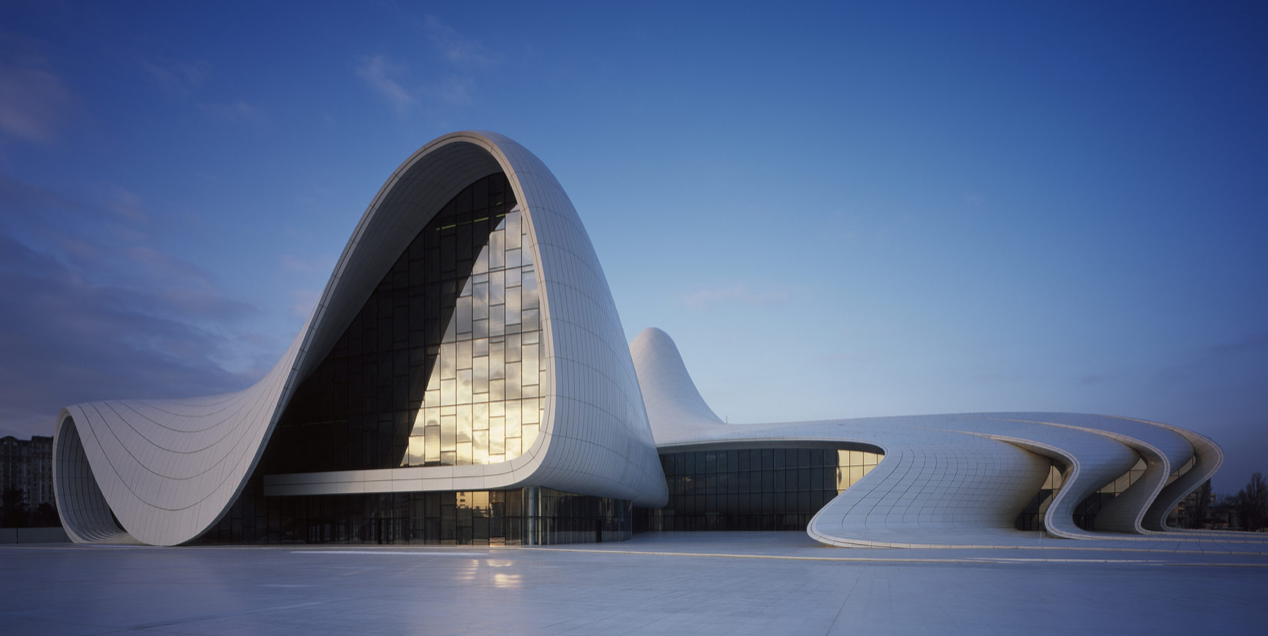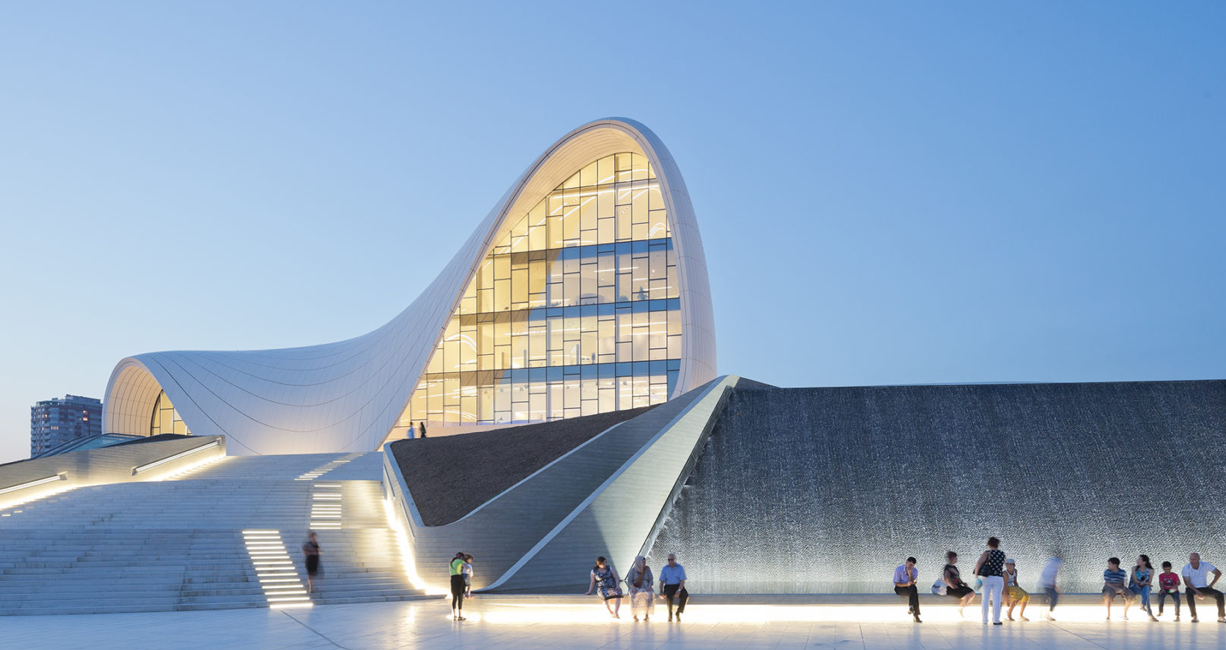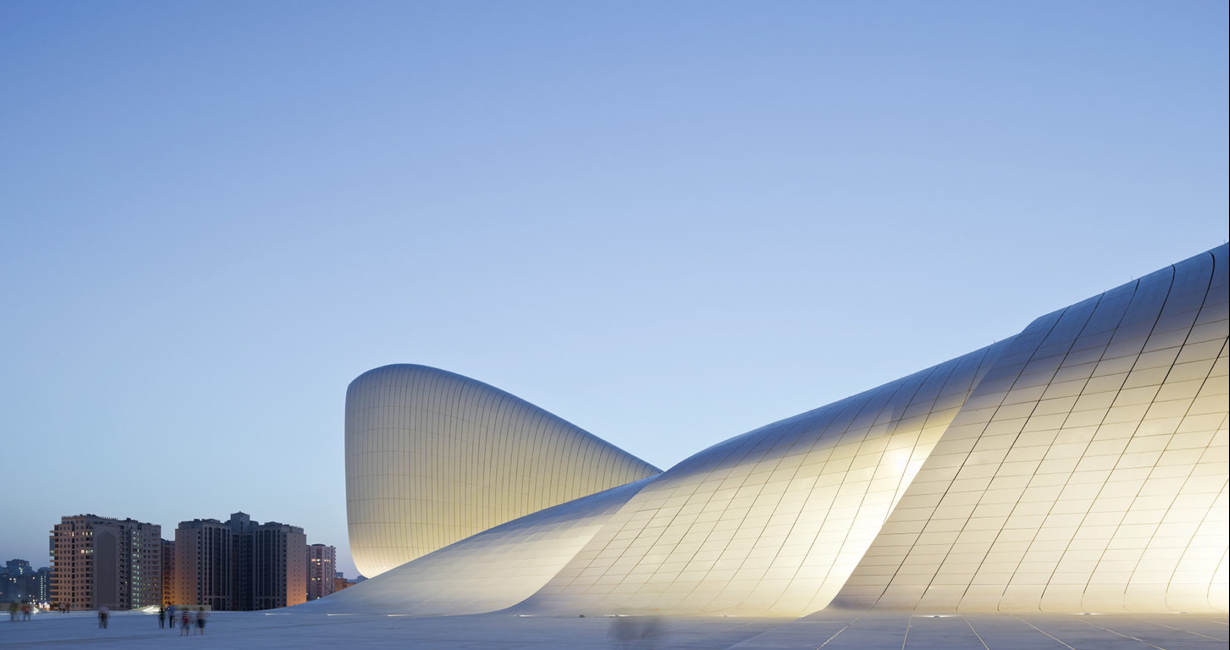Towards a more sustainable life with Neo-Futurism in Architecture
The architectural design movement ‘Neo-Futurism’ that emerged in the late ’20s - early 21st century is seen as a step towards a realistic, modern standard of living, rejecting the post-modernist construction style which developed in the late 1960s. The post-modernist idea faced a lot of skepticism on the grounds of being unattainable and unrealistic, whereas Neo-Futurism includes more human emotions and sustainability into city development using modern technology and new materials.

The contemporary and atypical forms intend to achieve the practicality and aesthetics of fast-developing cities. It deviates from typical and usual structures, square or rectangle buildings. Zaha Hadid’s Heydar Aliyev cultural center in Baku, Azerbaijan, for instance, features a fluid exterior with an overall structure that eliminates sharp angles. Its walls appear to flow continuously, resembling a wave spreading across the all-glass front of the building. Characteristics of a Neo-Futuristic structure: The construction and design of Neo-Futuristic architecture design are easily distinguishable from the ones common today: ● These structures seem to spiral upward making them twist and curve. Although, it is not precisely the curves that define Neo-Futuristic designs. It is the idea of sharp deviation from the present layouts to make the cities look more pleasing. ● Aside from human emotions, human values are also incorporated as a significant character of this architectural style. ● Using new and different materials like glass, aluminum, and steel in their construction for a sleek and modern look.

Each architectural design is unique, and is characterized by its incorporation of technological advancements and materials such as 3D printing and advanced engineering skills into building design. ● Domes, spirals and ‘everything out-of-the-box’ design is a part of the Neo-Futuristic design technique. The style integrates art and design into the buildings. ● Construction continuously embodies modern technology, making it more high-tech. ● Sustainability and eco friendliness are key points of Neo-Futuristic architecture as these buildings incorporate features like green roofs, rainwater harvesting systems, etc What makes Neo-Futuristic architecture sustainable? Neo-Futuristic Architecture is inherently sustainable because it incorporates design elements that prioritize energy efficiency, waste reduction, and the use of renewable resources. Besides, the buildings designed in this style often use cutting-edge materials and technology to minimize their environmental impact and maximize their efficiency.

The use of renewable energy sources, such as solar and wind power, and design elements such as green roofs and rainwater harvesting systems are also common in Neo-Futuristic buildings.These buildings often use materials such as bamboo and recycled steel which have lower environmental impact than traditional building materials.Pic credits: Iwan Baan

